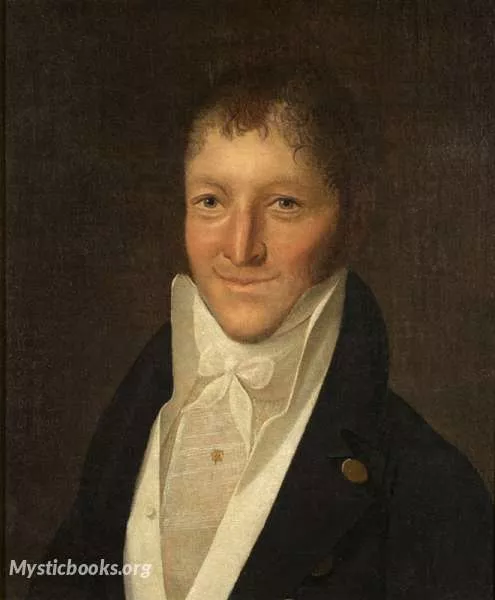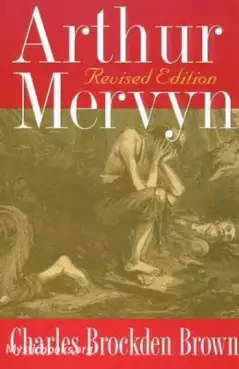
Timeline
Title
Country/Nationality
Charles Brockden Brown
Charles Brockden Brown (January 17, 1771 – February 22, 1810) was an American novelist, historian, and editor of the Early National period. He is generally regarded by scholars as the most important American novelist before James Fenimore Cooper. He is the most frequently studied and republished practitioner of the "early American novel," or the U.S. novel between 1789 and roughly 1820. Although Brown was not the first American novelist, as some early criticism claimed, the breadth and complexity of his achievement as a writer in multiple genres (novels, short stories, essays and periodical writings, poetry, historiography, and reviews) makes him a crucial figure in U.S. literature and culture of the 1790s, and the first decade of the 19th century. Brown was a significant public intellectual in the wider Atlantic print culture and public sphere of the era of the French Revolution.
Brown was born on January 17, 1771, the fourth of five brothers and six surviving siblings total in a Philadelphia Quaker merchant family. His father Elijah Brown, originally from Chester County, Pennsylvania, just southwest of Philadelphia, had a variable career primarily as a land-conveyancer or agent in real estate transactions. The two oldest brothers, Joseph and James, and youngest brother Elijah, Jr., were import-export merchants and bought shares in re-export ventures as early as the 1780s. Brown became a reluctant partner of their short-lived family re-export firm, James Brown & Co., from late 1800 to the firm's dissolution during 1806. The third brother, Armitt, was a clerk in the early 1790s for the Treasury Department and at the Bank of Pennsylvania (for a time Armitt was a clerk with Alexander Hamilton), and later participated in the brothers' import-export firm. The family's mercantile background and experiences in the global trade and trade conflicts of the Revolutionary era are relevant to Brown's writings insofar as he often explored issues connected to the period's culture of commerce and the role that commerce plays in the historical transition from 18th-century civic republicanism to 19th-century laissez-faire liberalism and capitalism.
Brown's family intended for him to become a lawyer. After six years in Philadelphia at the law office of Alexander Wilcocks, he ended his law studies in 1793. He became part of a group of young, New York-based intellectuals who helped begin his literary career. The New York group included a number of young male professionals who called themselves the Friendly Club (including Dr. Elihu Hubbard Smith, Brown's closest friend during this period, and William Dunlap), along with female friends and relatives who were interested in companionship and cultural-political conversation.
During most of the 1790s, Brown developed his literary ambitions in projects that often remained incomplete (for example the so-called "Henrietta Letters," transcribed in the Clark biography) and frequently used his correspondence with friends as a laboratory for narrative experiments. His first publications appeared during the late 1780s (e.g. "The Rhapsodist" essay series from 1789), but he published little during this period. By 1798, however, these formative years gave way to a period of novel-writing during which Brown published his best known work. These novels and the rest of Brown's career were informed by the progressive ideas he used and developed from the period's British radical-democratic writers, most notably Mary Wollstonecraft, William Godwin, Thomas Holcroft, and Robert Bage. Brown was influenced by these writers and in turn exerted an influence on them and their younger students, for example, in Godwin's later novels, or in the work of Percy Bysshe Shelley and Mary Shelley, who reread Brown as she wrote her novels Frankenstein; or, The Modern Prometheus (1818) and The Last Man (1826). The former was, according to his friend Peacock, heavily influenced in ‘the formation of his character’ from the depicted characters in Brown’s novels.
Between 1798 and late 1801, Brown published the Wollstonecraftian-feminist dialog Alcuin (1798), and seven subsequent novels. An additional novel was written, but was lost by a series of mishaps and consequently never saw publication.
Brown's novels are often characterized simply as Gothic fiction, although the model he develops is far from the Gothic romance mode of writers such as Ann Radcliffe. Brown's novels combine several Revolutionary-era fiction subgenres with other types of late-Enlightenment scientific and medical knowledge. Most notably, they develop the British radical-democratic models of Wollstonecraft, Godwin, and Holcroft and combine these with elements of German "Schauer-romantik" Gothic from Friedrich Schiller, the enlightened sentimental fictions of Jean-Jacques Rousseau or Laurence Sterne, women's domestic novels by writers such as Fanny Burney or Hannah Webster Foster, and other genres such as the captivity narrative. Brown builds plots around particular motifs such as sleepwalking and religious mania, drawing on Enlightenment-era medical writings by people such as Erasmus Darwin.
Brown died of tuberculosis in Philadelphia on February 22, 1810, at the age of 39. He was interred at the Arch Street Friends Meeting House Burial Ground in Philadelphia. A cenotaph was placed in his honor at Laurel Hill Cemetery in Philadelphia.
Books by Charles Brockden Brown

Arthur Mervyn
Kicked out of his parental home by his scheming young stepmother, a young country boy, Arthur Mervyn arrives in Philadelphia. Here he finds the city in the throes of a deadly yellow-fever epidemic. However, he finds a small job as a clerk and is dete...

Wieland; Or, The Transformation: An American Tale
Wieland; Or, The Transformation is a chilling novel that explores the themes of identity, family, and the supernatural within the context of pre-Revolutionary America. The story centers on the seemingly idyllic life of the Wieland family, which is d...